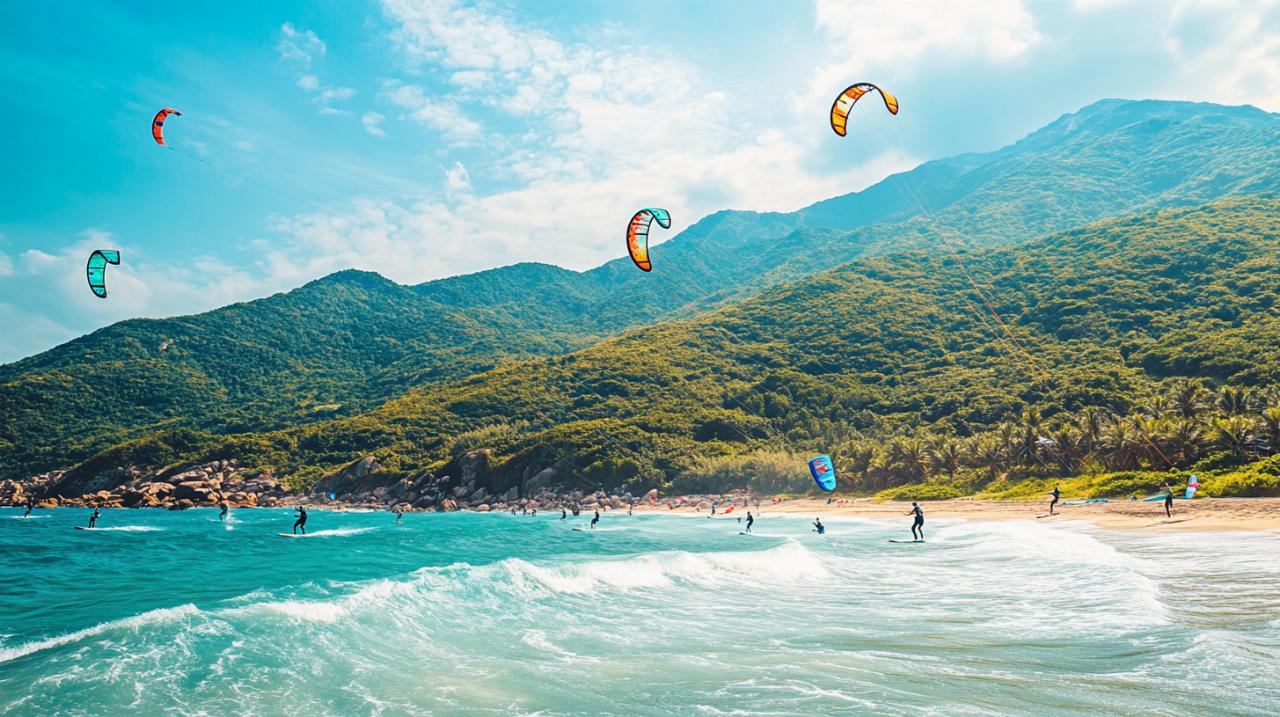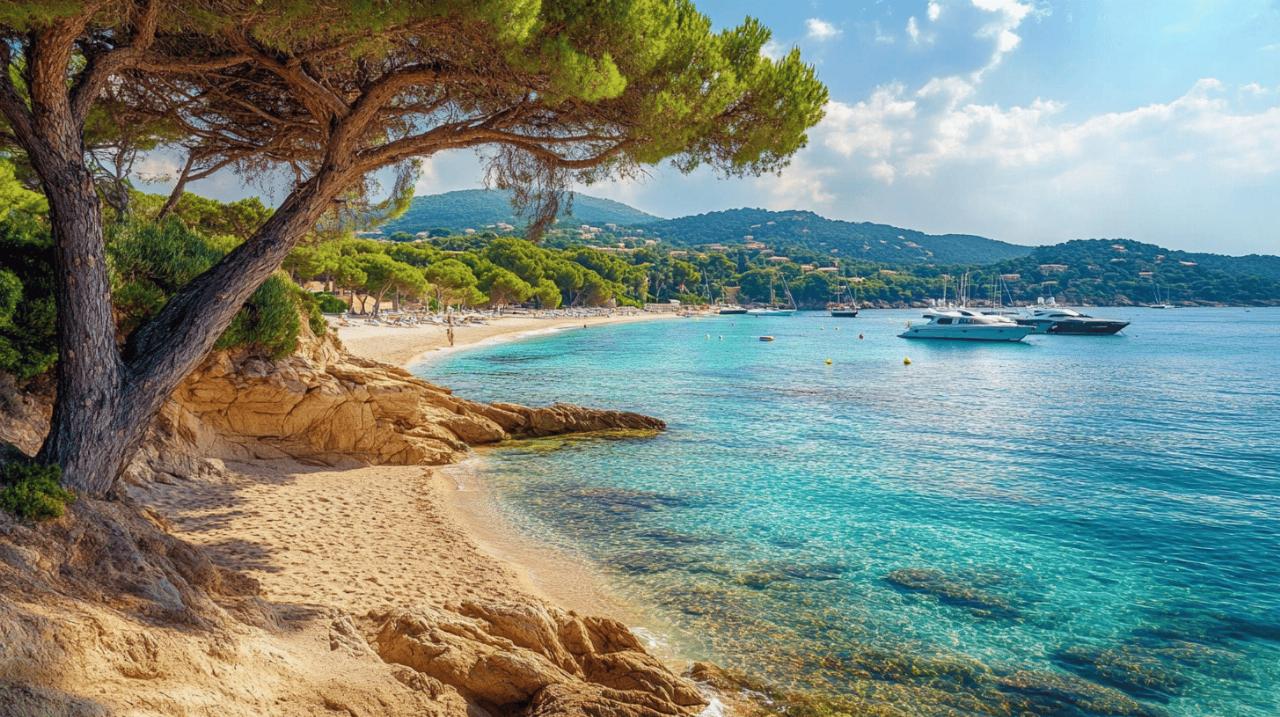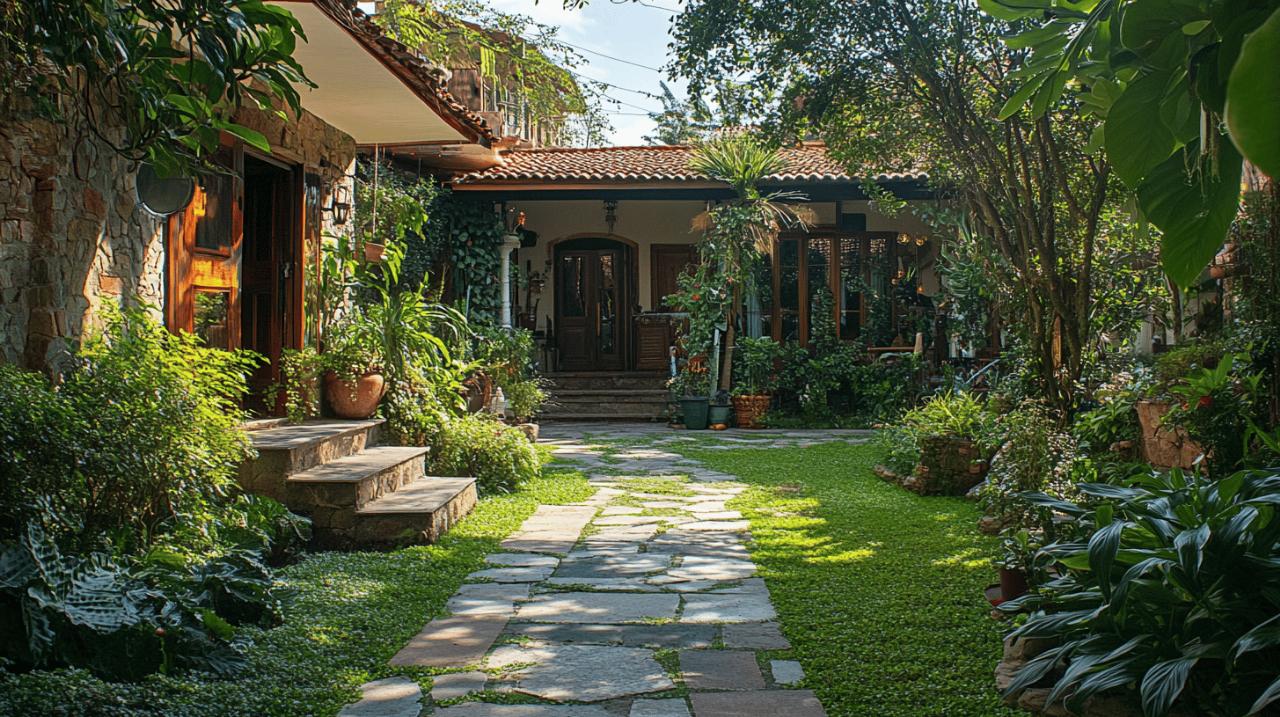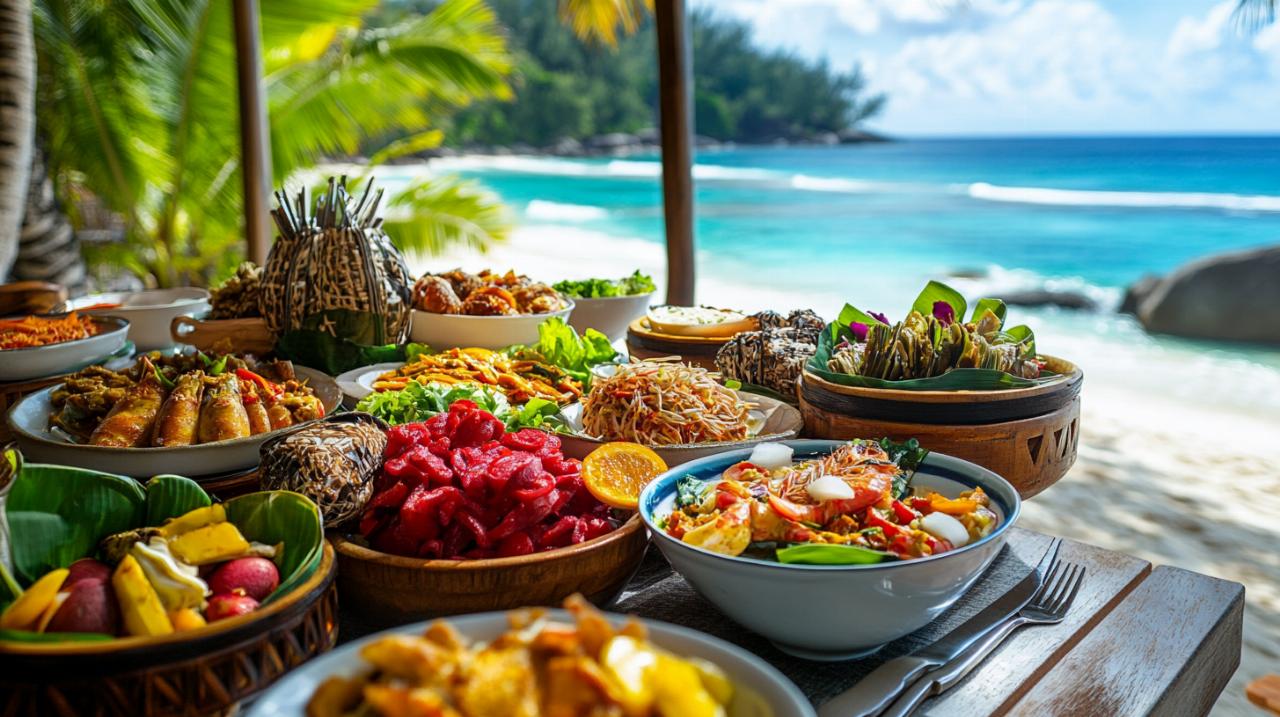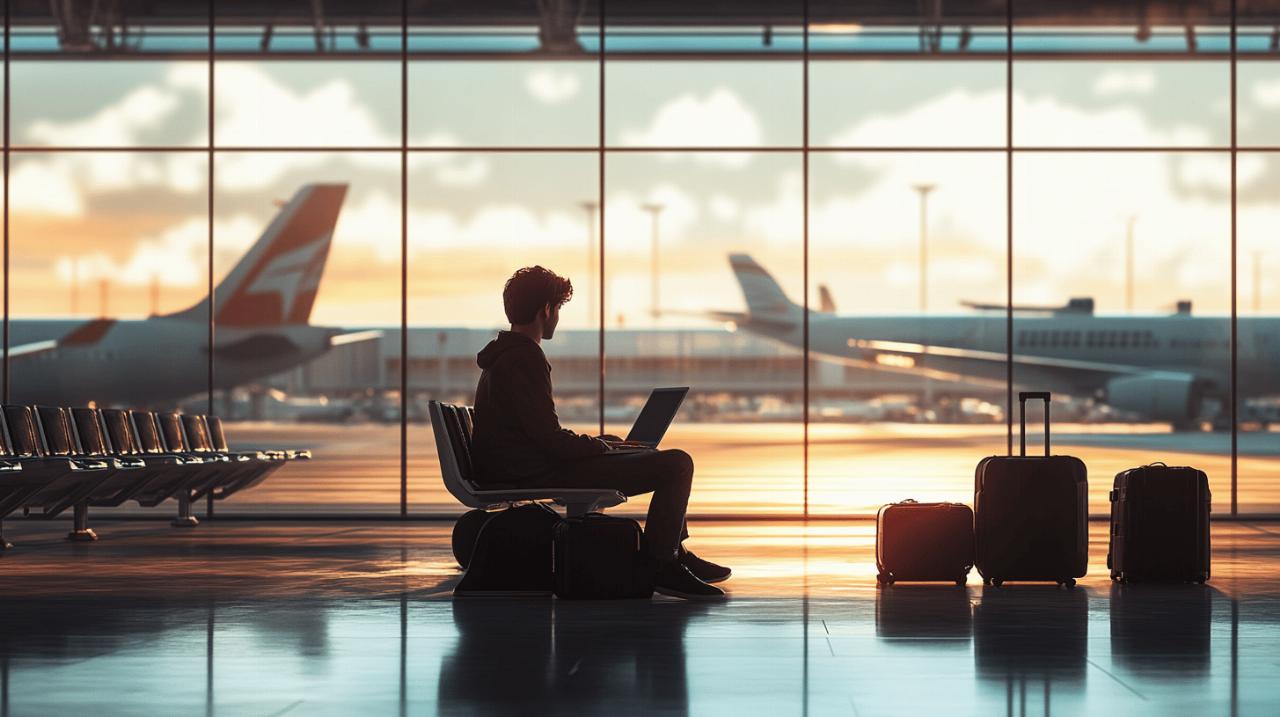Asia's boundless coastlines and vibrant cultures make it an unparalleled destination for kitesurfers seeking more than just wind and waves. Voyage Kitesurf: Guide Asie offers cultural explorers a unique perspective on this thrilling water sport, where the excitement of riding extends beyond the surface to deep cultural experiences that enrich your journey.
Asian kitesurfing havens: where wind meets culture
The Asian continent boasts some of the world's most spectacular kitesurfing destinations, where consistent winds meet warm waters and rich cultural heritage. From pristine beaches to hidden lagoons, Asia offers kiteboarding enthusiasts a diverse range of spots suitable for every skill level. The region's unique appeal lies in this perfect blend of ideal weather conditions and immersive cultural experiences that await between kite sessions.
Sri lankan lagoons: the perfect learning ground
Sri Lanka has rapidly emerged as a kitesurfing jewel in Asia's crown, particularly celebrated for its flat water lagoons that create ideal conditions for beginners and those looking to master new techniques. The consistent trade winds blow reliably for approximately nine months of the year, with south-west winds from April to September delivering an impressive 18-25 knots, while the north winds from December to March offer a gentler 15-20 knots. What makes Sri Lankan kiteboarding truly special is the combination of warm water temperatures year-round that eliminate the need for wetsuits, and the abundance of qualified schools offering comprehensive kitesurfing lessons for all levels.
Notably, just 30 kilometres from the popular Kalpitiya area lies Rameswaram, a well-kept secret with stable winds but significantly fewer kitesurfers crowding the water. Here, boutique homestays like Kathadi North and budget-friendly accommodations such as Kathadi South cater specifically to kitesurfers, creating a community atmosphere where stories are shared around evening BBQ campfires under starlit skies.
Thailand's coastal charm: balancing thrills and relaxation
Thailand's tropical allure extends magnificently to its kitesurfing scene, creating a perfect balance between exhilarating water sports and luxurious relaxation. Hua Hin stands out as a premier destination, with the prime kitesurfing season running from December to May. March delivers the most consistent conditions, with wind speeds averaging a comfortable 10-16 knots during the windy season. The designated kitesurfing zone stretches between Marriott Hotel and Khao Takiab mountain, offering a spacious playground for enthusiasts.
February brings particularly favourable conditions for beginners, with warmer winds and shallower waters creating an ideal learning environment. Equipment rental facilities readily accommodate travellers who prefer to travel light, recommending kite sizes between 12-17m² or foils for optimal performance in local conditions. Beyond kiteboarding, Thailand entices with its legendary beaches, mouth-watering cuisine, and vibrant nightlife, while alternative activities like paddle surfing and wakeparks offer variety for days when the wind doesn't cooperate.
Hidden kitesurfing treasures across asia
While established locations like Thailand and Sri Lanka rightfully attract attention, Asia harbours numerous lesser-known kitesurfing paradises waiting for adventurous souls to discover. These hidden gems often provide the most authentic experiences, where pristine waters meet uncrowded beaches and traditional local communities offer a glimpse into Asia's cultural heart.
Undiscovered Spots from Philippines to Vietnam
The Philippines boasts four remarkable kitesurfing locations characterised by their affordability and versatility, offering both flat water and wave conditions in consistently warm waters. Boracay Island stands out with its powder-white beaches and reliable winds, creating a stunning backdrop for kitesurfing adventures. Vietnam, similarly budget-friendly, presents three distinctive kitesurfing destinations, with Mui Ne widely recognised as one of Asia's premier spots. Its steady winds and long stretches of beach make it particularly appealing for kitesurfers seeking consistent conditions without Western prices.
China's Hainan Island represents another emerging destination, where developing infrastructure meets traditional Chinese culture, creating a fascinating contrast for visiting kitesurfers. For those willing to invest in a premium experience, the Maldives offers an unparalleled luxury kitesurfing adventure with its crystal-clear lagoons and exclusive resorts. Across these varied destinations, Asia's warm waters remain a constant draw, eliminating the need for thick wetsuits and creating comfortable riding conditions year-round.
Authentic experiences away from tourist crowds
The true magic of kitesurfing in Asia's less frequented spots lies in the authentic cultural experiences they offer. Unlike established kitesurfing hubs where international tourists often outnumber locals, these hidden treasures maintain their cultural integrity and traditional way of life. Morning kite sessions might begin with the sight of local fishermen launching their boats, while afternoons could involve wandering through village markets where few foreign words are heard.
Accommodation in these areas typically consists of family-run guesthouses rather than resort chains, creating opportunities for meaningful cultural exchange and insight into local lifestyles. The cuisines you'll encounter represent authentic regional specialities rather than internationalised versions adapted for tourist palates. This immersive experience extends to the kitesurfing itself, where you might find yourself sharing tips with local riders who bring their unique approaches and perspectives to the sport, further enriching your Asian kiteboarding adventure.
Cultural immersion between kite sessions
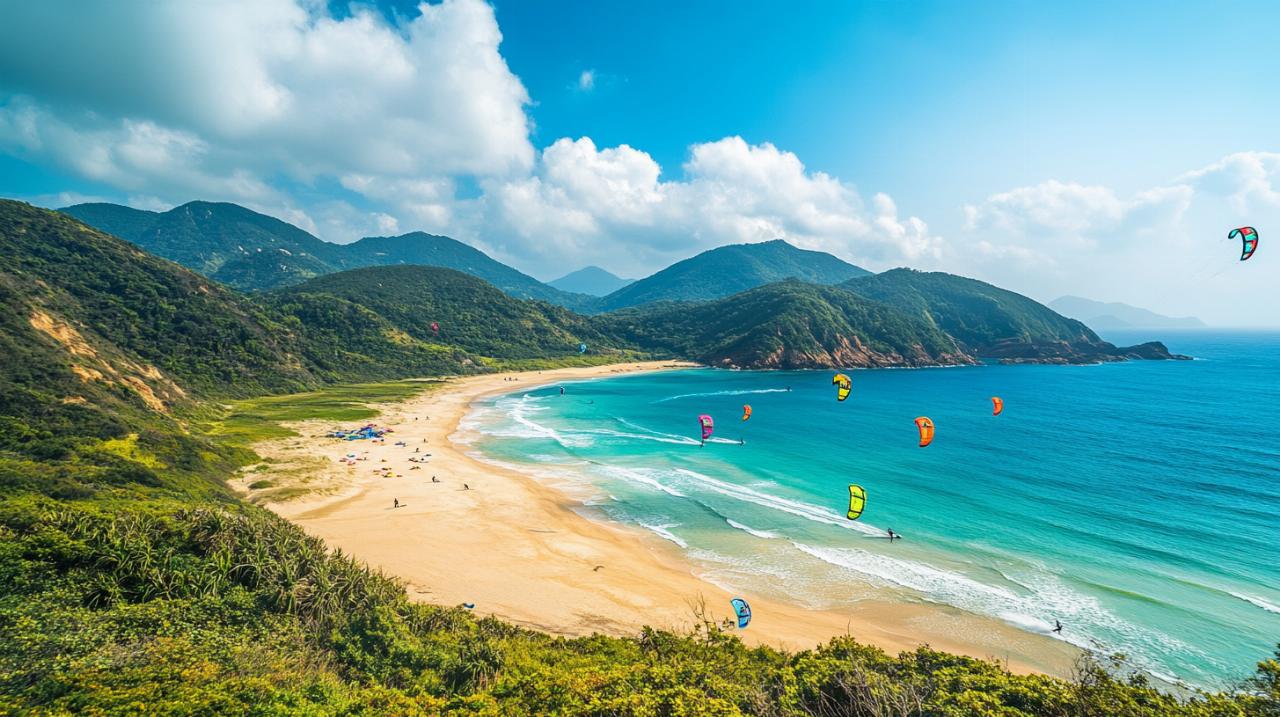 What truly distinguishes an Asian kitesurfing holiday is the wealth of cultural experiences available when you're not riding the waves. Unlike purely sport-focused destinations, Asia offers a tapestry of ancient traditions, spiritual practices, and artistic heritage that can transform a simple kitesurfing trip into a profound journey of discovery and personal growth.
What truly distinguishes an Asian kitesurfing holiday is the wealth of cultural experiences available when you're not riding the waves. Unlike purely sport-focused destinations, Asia offers a tapestry of ancient traditions, spiritual practices, and artistic heritage that can transform a simple kitesurfing trip into a profound journey of discovery and personal growth.
Ancient temples and local customs
Throughout Asia, sacred spaces and spiritual practices form an integral part of daily life, providing kitesurfers with unique opportunities for cultural exploration between sessions. In Thailand, ornate Buddhist temples with their golden stupas offer tranquil spaces for reflection, while local ceremonies and festivals provide windows into age-old traditions. Sri Lankan kitesurfing destinations often lie within reach of ancient ruins and historical sites that tell stories of bygone civilisations and kingdoms.
Many kitesurfing spots in Vietnam and the Philippines sit near communities where traditional crafts continue to thrive, from pottery and weaving to boat building techniques passed down through generations. Visitors open to cultural exchange find that locals often welcome respectful interest in their customs, sometimes inviting guests to participate in community events or family celebrations. These interactions create meaningful connections that transcend language barriers and enrich the kitesurfing experience with human warmth and cultural understanding.
Culinary journeys through asian flavours
Asian cuisine represents one of the most diverse and sophisticated culinary traditions in the world, making gastronomic exploration an essential component of any kitesurfing journey through the continent. After intense sessions on the water, local eateries offer the perfect opportunity to replenish energy with dishes that balance complex flavours and fresh ingredients. Street food vendors and night markets present affordable feasts where the most authentic regional specialities can be discovered.
Thai kitesurfing destinations tempt riders with aromatic curries and zesty seafood, while Sri Lankan coastal areas specialise in fresh-caught fish prepared with distinctive spice blends. Vietnamese kitesurfing havens offer delicate broths and crisp salads bursting with herbs, and Philippine beach spots serve succulent grilled seafood with tropical fruits. For kitesurfers with dietary preferences, vegetarian options abound across the region, particularly in areas with Buddhist influences. Beyond mere sustenance, these culinary experiences provide insight into local agriculture, fishing traditions, and the historical influences that have shaped regional cooking styles.
Practical tips for your asian kitesurfing adventure
Preparing for a kitesurfing journey across Asia requires thoughtful planning that accounts for the continent's diverse climates, varying infrastructure, and regional differences. With some advance preparation and flexibility, you can maximise your time on the water while minimising logistical challenges.
Seasonal Wind Patterns and When to Visit
Understanding Asia's monsoon patterns and seasonal wind shifts is crucial for timing your kitesurfing adventure perfectly. Each destination operates on its own distinct wind calendar, often offering multiple seasons throughout the year. In Sri Lanka, the southwest monsoon brings reliable winds from April to September, while the northeast monsoon creates excellent conditions from December to March. Thailand's Hua Hin experiences its prime kitesurfing season from December to May, with March typically delivering the most consistent winds.
Vietnam's Mui Ne enjoys its strongest winds from November through March, coinciding with the dry season when rainfall is minimal. The Philippines offers year-round kitesurfing possibilities with regional variations; Boracay's peak season runs November through April. When planning your trip, consider that shoulder seasons often present the best value, balancing decent wind conditions with lower accommodation prices and fewer crowds. Weather tracking apps and dedicated kitesurfing forecast services can provide valuable data in the weeks leading up to your journey, helping you pack appropriate equipment for expected conditions.
Packing essentials and equipment rental options
Travelling light while ensuring you have all necessary gear presents a common dilemma for kitesurfers visiting Asia. Most established kitesurfing destinations offer quality equipment rental, allowing you to avoid excess baggage fees and travel complications. Current rental rates vary by location, with Thailand charging approximately 60 USD per hour for private lessons and equipment. When bringing personal gear, prioritise items that are difficult to rent or replace, such as your preferred harness, impact vest, and water shoes that protect against coral and sea urchins.
Beyond kitesurfing equipment, pack reef-safe sunscreen, rashguards for sun protection, and a comprehensive first aid kit including rehydration salts. A waterproof phone case proves invaluable for communication and photography while near the water. Consider bringing a lightweight dry bag to protect electronics during boat transfers to kitesurfing spots. For accommodation, many Asian kitesurfing destinations offer options ranging from budget-friendly guesthouses to luxury resorts, with specialist kitesurfing lodges like those in Rameswaram designed specifically with riders' needs in mind, often providing gear storage, wash areas, and community spaces where kitesurfing enthusiasts can exchange tips and plan sessions.

